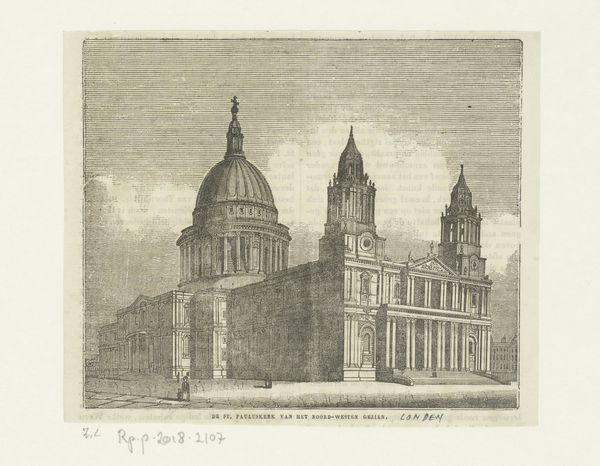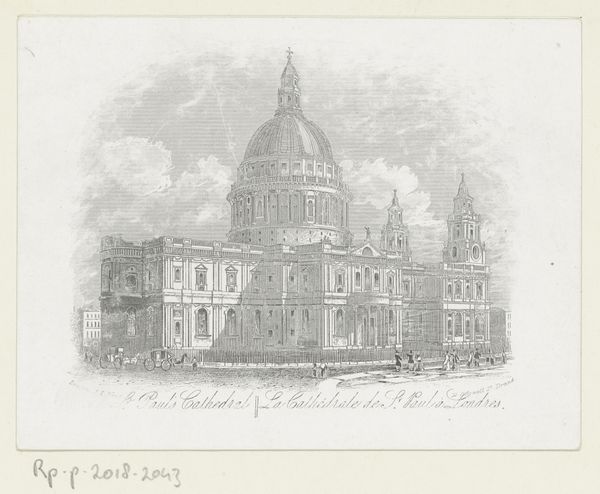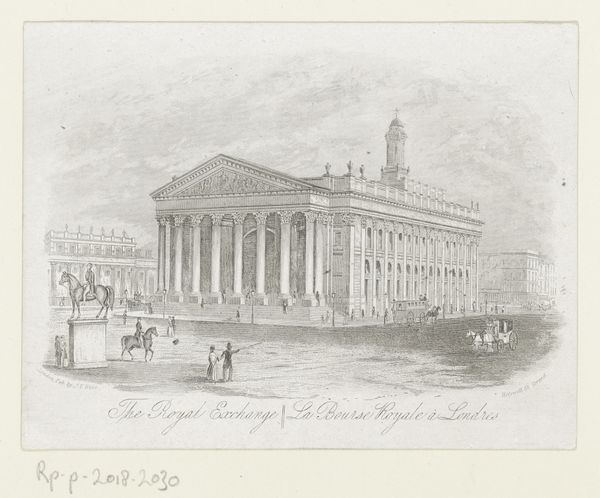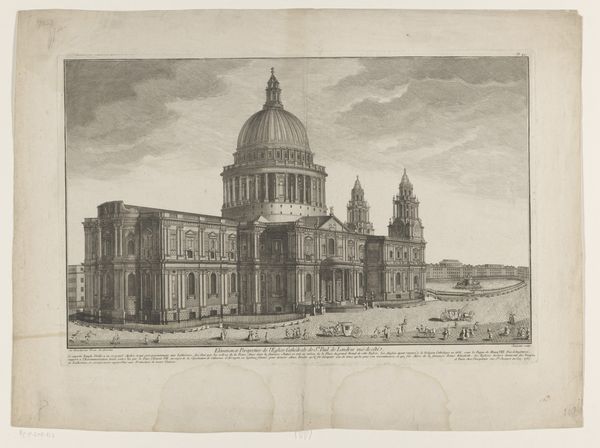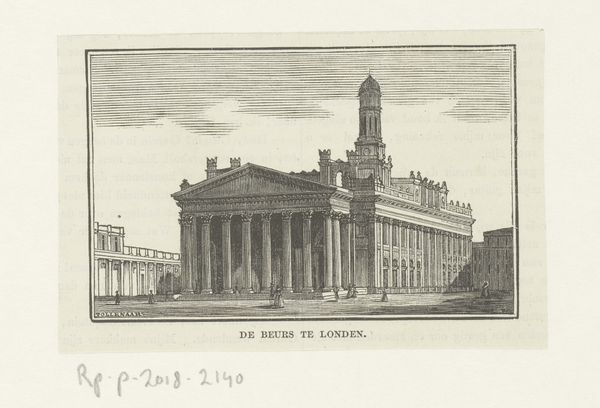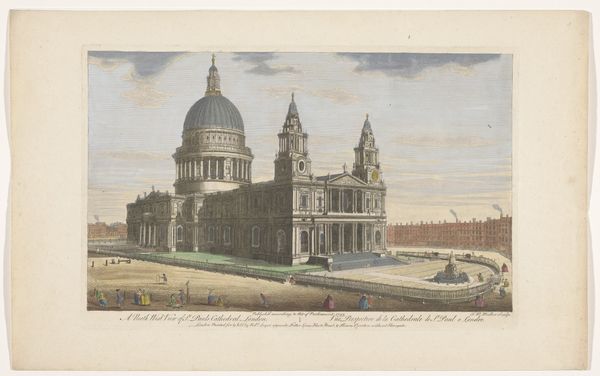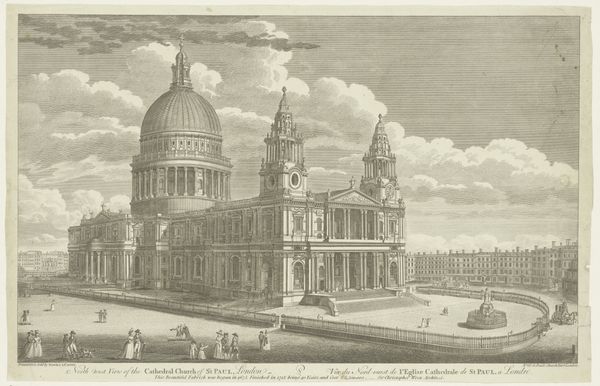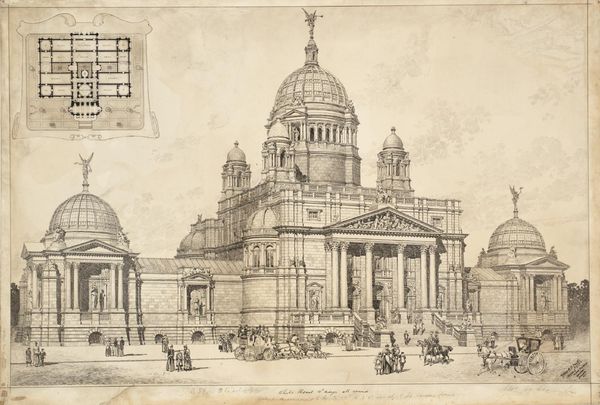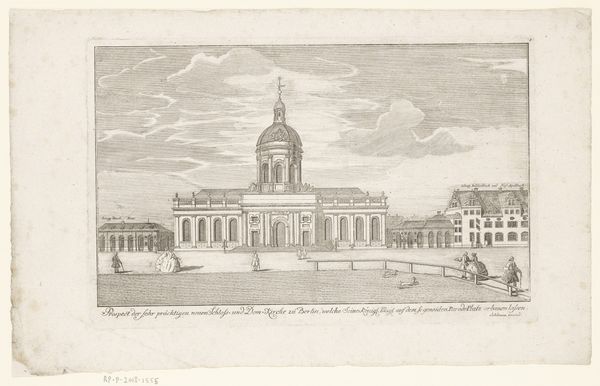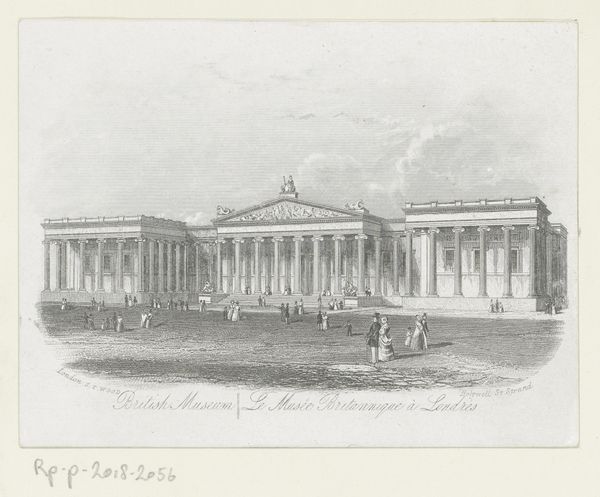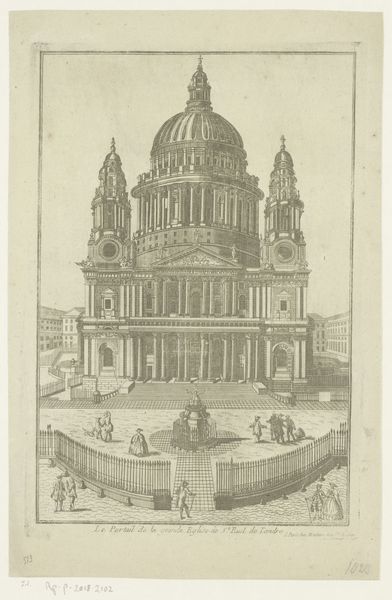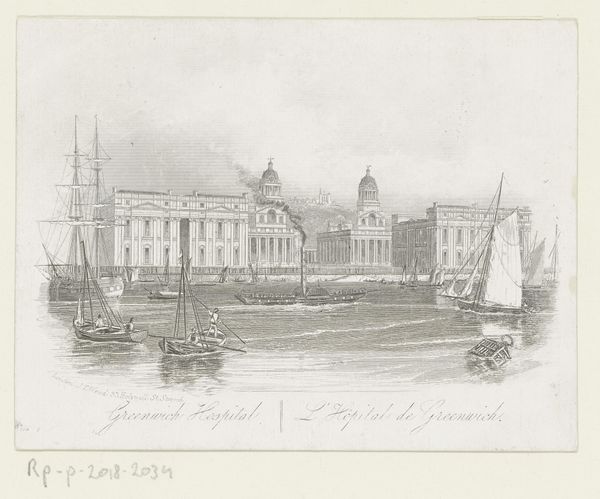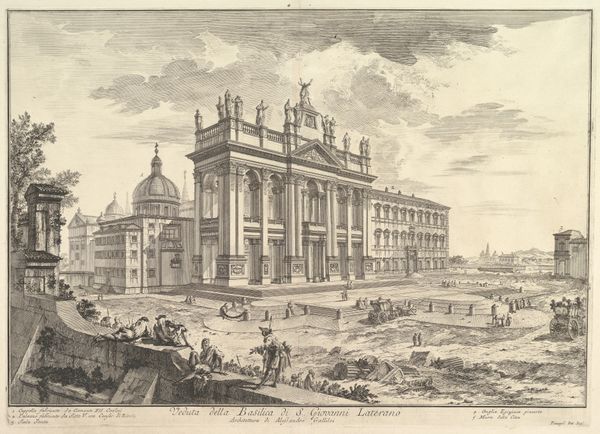
Dimensions: height 117 mm, width 152 mm
Copyright: Rijks Museum: Open Domain
Curator: I'm drawn to the sense of scale and atmosphere in this 19th-century print. Titled "Gezicht op St Paul's Cathedral, te Londen," or "View of St Paul's Cathedral in London," it's attributed to an anonymous artist. Editor: My immediate thought is the incredible precision and control achieved using etching and engraving. Look at those delicate lines capturing the massive stone facade! You can almost feel the weight of the materials. Curator: The cathedral becomes a symbol here. Rebuilt after the Great Fire of London, it embodies resilience, the enduring power of faith, and, on a wider level, civic pride. Even in the midst of Romanticism, Neoclassical order projects dominance. Editor: Absolutely. Consider the labor involved—the craftsmanship necessary to produce such detailed lines and repetitive architectural elements. These prints, though often seen as "lesser" art, represent immense skill and are by no means easily reproduced. We should really consider these under-recognized art forms. Curator: Note the figures in the foreground—they accentuate the size of the building. It really enhances the sublime presence of the cathedral. Their dress also places it within a specific historical and cultural moment, creating a scene of quotidian London life with this backdrop of permanence. Editor: I'm also thinking about the dispersal of information—this was a pre-photographic means of distributing knowledge, especially to those who might never see the real structure in person. An engraving, then, functioned as an accessible representation of British identity and ingenuity. Curator: This makes me think about the transmission of ideals through images. Beyond national pride, consider the propagation of architectural principles, as neoclassicism shaped not only Britain, but European and American thought, creating a visual lingua franca, literally engraved here for prosperity. Editor: Seeing St. Paul’s represented in this way underscores how deeply tied cultural landmarks are to methods of production and broader systems of labor. A stone here may well represent countless hours of skilled handiwork and an often neglected understanding of making and materials. Curator: So, what seems like a mere rendering speaks volumes about societal values embedded within architectural representation. It also speaks volumes about its continued role within Britain's psyche. Editor: Indeed. It's in carefully studying these works of “applied” art we can appreciate the relationship between craftsmanship and national identity.
Comments
No comments
Be the first to comment and join the conversation on the ultimate creative platform.
